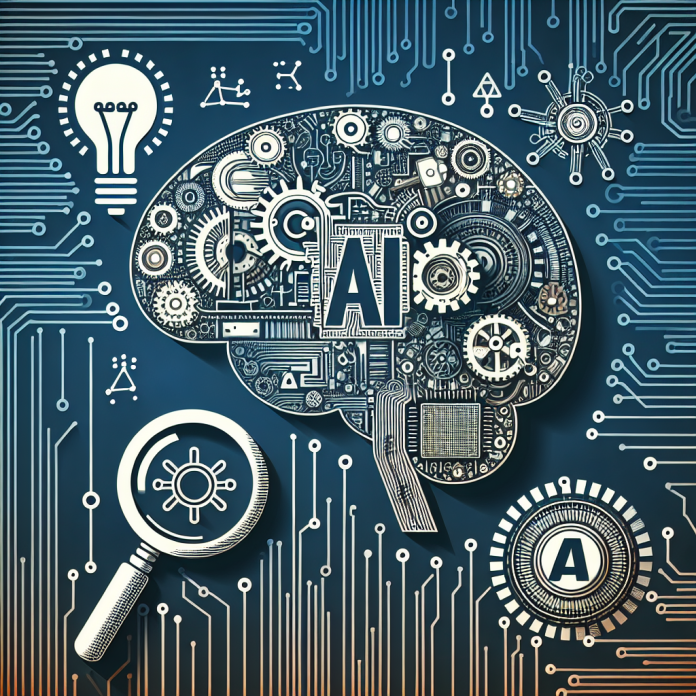**Unlocking the Mysteries of Artificial Intelligence: Exploring Core Elements of AI**
In today’s rapidly evolving technological landscape, artificial intelligence (AI) has emerged as a key player. From voice assistants like Siri and Alexa to self-driving cars and predictive analytics, AI has infiltrated numerous facets of our daily lives. But what exactly lies at the core of AI? What are the foundational elements that enable machines to mimic human intelligence and perform complex tasks?
Let’s delve into the inner workings of AI and uncover the core elements that make it all possible.
### Understanding Machine Learning:
At the heart of AI lies the concept of machine learning, a powerful tool that allows machines to learn from data without being explicitly programmed. Machine learning algorithms analyze data, identify patterns, and make decisions based on the information they have gathered.
For example, consider a spam filter in your email inbox. This filter uses machine learning to analyze the content of incoming emails and distinguish between spam and legitimate messages. Over time, as the filter receives feedback on its decisions, it adjusts its algorithm to become more accurate in identifying spam.
### Neural Networks and Deep Learning:
Neural networks are another essential element of AI that mimics the way the human brain operates. These networks consist of interconnected nodes, or artificial neurons, that process information and make decisions.
Deep learning, a subset of neural networks, involves training models on vast amounts of data to recognize patterns and make decisions. This technology powers applications such as image recognition, speech processing, and natural language understanding.
For instance, deep learning algorithms have revolutionized the field of image recognition, enabling machines to identify objects in photos with remarkable accuracy. Companies like Google and Facebook use deep learning to improve their image recognition capabilities, making it easier for users to search for photos and videos.
### Natural Language Processing (NLP):
Natural language processing is another critical element of AI that enables machines to understand and interact with human language. NLP algorithms analyze and interpret text and speech, allowing computers to respond to queries, translate languages, and generate human-like responses.
For instance, virtual assistants like Amazon’s Alexa and Apple’s Siri use NLP to understand spoken commands and provide relevant information. These assistants can answer questions, set reminders, and even engage in casual conversations with users, thanks to advancements in NLP technology.
### Reinforcement Learning:
Reinforcement learning is a key component of AI that involves training algorithms through trial and error. In this approach, machines learn how to perform tasks by receiving feedback on their actions and adjusting their strategies accordingly.
One prominent example of reinforcement learning is AlphaGo, a program developed by DeepMind that defeated world champion Go player Lee Sedol in a historic match. AlphaGo learned to play the ancient board game by playing millions of games against itself, gradually improving its strategy through reinforcement learning.
### Robotics and Automation:
AI has also revolutionized the field of robotics and automation, enabling machines to perform tasks that require human-like abilities. From manufacturing and logistics to healthcare and agriculture, robots powered by AI are reshaping industries and increasing efficiency.
For example, in the healthcare sector, surgical robots equipped with AI can perform minimally invasive procedures with greater precision and accuracy than human surgeons. These robots use AI to analyze patient data, plan surgical procedures, and assist in performing complex operations.
### Ethical Considerations:
As AI continues to advance and become more integrated into various aspects of society, ethical considerations have come to the forefront. Issues such as bias in algorithms, data privacy, and job displacement are just a few of the challenges that must be addressed to ensure responsible AI development.
For instance, biases in AI algorithms can lead to discriminatory outcomes in areas like hiring, lending, and law enforcement. It is crucial for developers to be aware of these biases and take steps to mitigate them through careful data collection and algorithm design.
### The Future of AI:
Looking ahead, the future of AI holds immense promise and potential for further innovation. As the technology continues to evolve, AI applications will become more sophisticated, capable of performing tasks that were once thought to be exclusively human.
From autonomous vehicles and personalized healthcare to climate modeling and financial forecasting, AI will continue to revolutionize industries and drive progress in ways we have yet to imagine.
### Conclusion:
In conclusion, artificial intelligence encompasses a diverse range of core elements that enable machines to replicate human intelligence and perform complex tasks. From machine learning and neural networks to natural language processing and reinforcement learning, these foundational elements form the building blocks of AI technology.
As we continue to explore the capabilities of AI and integrate it into various aspects of our lives, it is essential to consider the ethical implications and strive for responsible development. By harnessing the power of AI in a thoughtful and ethical manner, we can unlock its full potential and drive positive change in society.
The journey to understand and harness the power of AI is just beginning, and the possibilities are as vast as our imagination. So let’s embrace this transformative technology and explore the endless possibilities that lie ahead.

